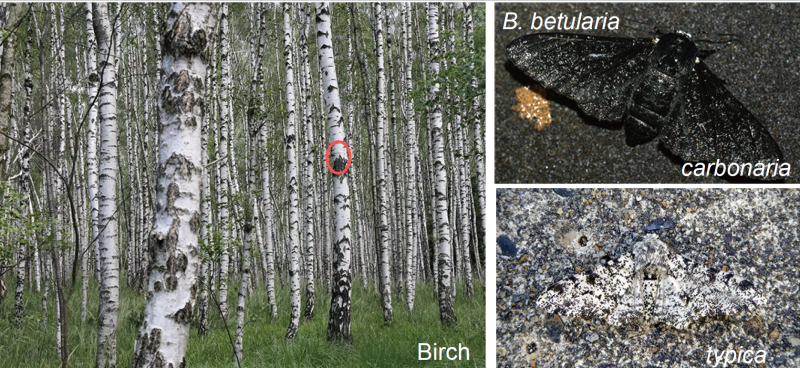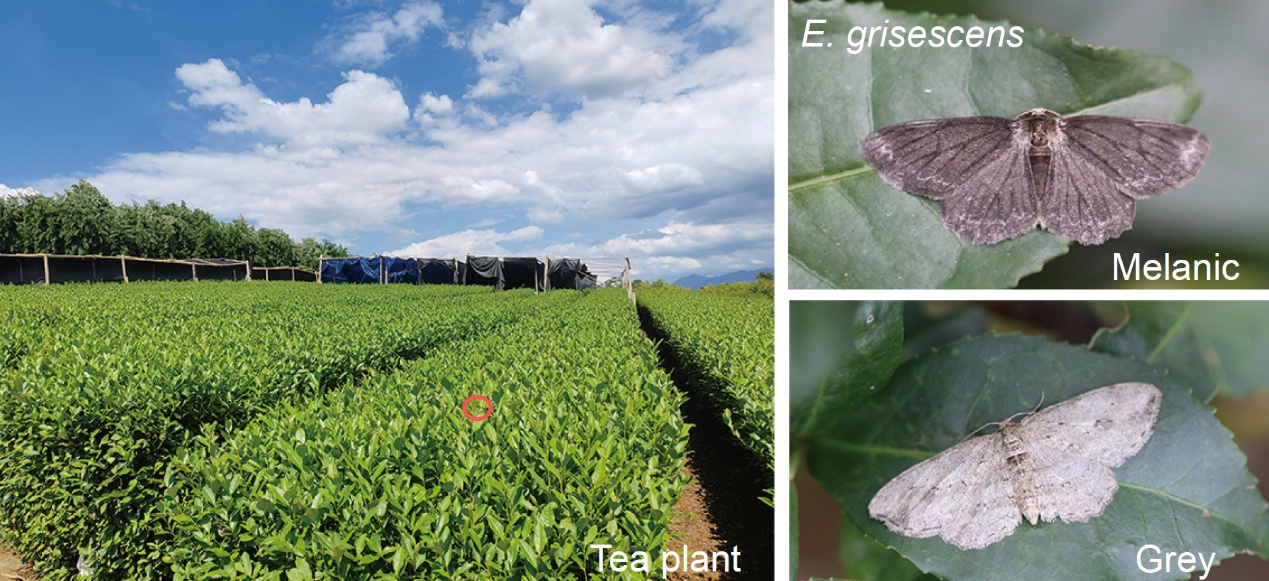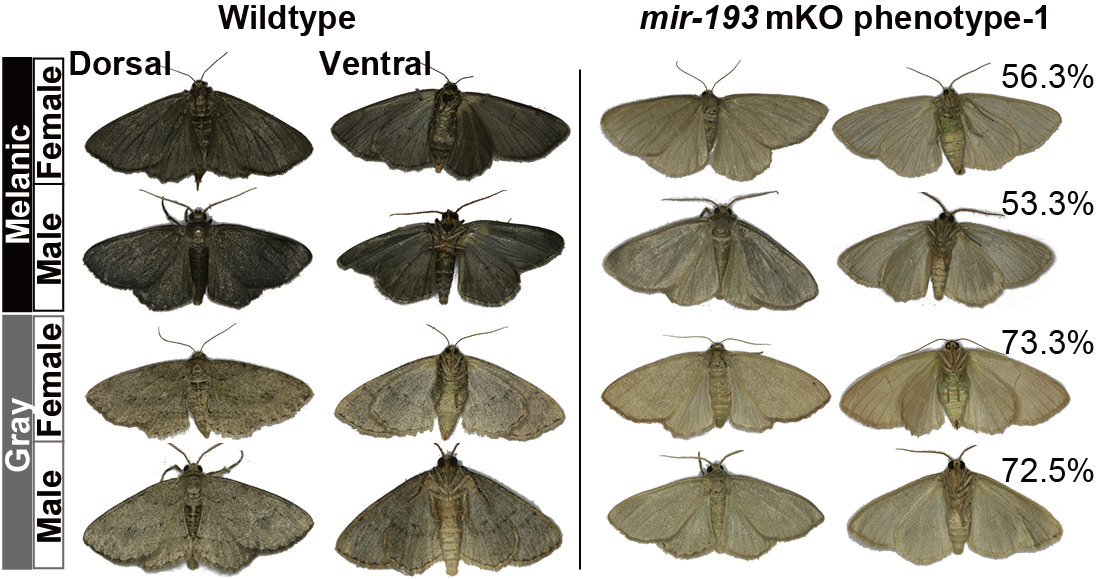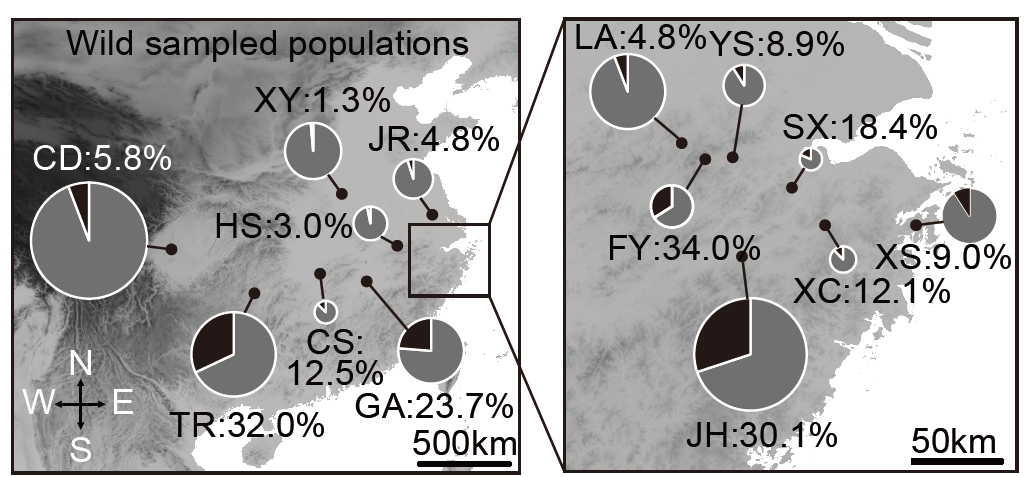New Mechanism of Parallel Evolution in Moth Melanism
A recent collaborative study led by Dr. Shuai Zhan’s team at the Center for Excellence in Molecular Plant Sciences of the Chinese Academy of Sciences has unveiled the parallel evolutionary mechanism and ecological contexts of melanism in moths. The findings, entitled “The genetics and evolution of moth melanism in the absence of strong natural selection,” were published in National Science Review on October 24, 2025.
Insect color variation is widespread in nature, with the competitive advantage of avoiding predation via mimicry and camouflage serving as a key evolutionary driver. The textbook example of 'industrial melanism' in the British peppered moth (Biston betularia) is a textbook case of natural selection. Generally, the pale morph (typica) is well-camouflaged on lichen-covered tree bark like birch, effectively avoiding predation by natural enemies. During the Industrial Revolution, the frequency of the melanic morph (carbonaria) dramatically increased in industrially polluted areas where tree trunks were blackened by soot. The genetic basis of melanism in the peppered moth has been progressively elucidated with advances in molecular biology and omics technologies (e.g., van’t Hof et al. 2016). However, aside from the peppered moth, the mechanisms of melanism in other moth species (comprising nearly 90% of described Lepidoptera), particularly in different ecological contexts, remain poorly understood.
The tea geometrid (Ectropis grisescens) is a major tea pest widely distributed in the tea gardens of East Asia, with both melanic and gray morphs in nature. Unlike peppered moths that rest on tree bark that is relatively exposed to predators, tea geometrids inhabit densely grown tea plants, whose trunks are fully sheltered by leaves and twigs. In other words, the environment of tea gardens provides minimal camouflage benefits for both morphs. This system thus offers a unique model to study the impacts of multiple ecological factors on melanism in the absence of strong natural selection.
In this study, the research team applied linkage mapping and population genomic approaches to identify the melanism locus in tea geometrids. As a result, they found that, despite slight differences from each other, melanism loci of various tea geometrid populations were all localized to the cortex locus, a well-known 'hotspot' for controlling wing color patterns, which is highly homologous to that found in the British peppered moth and many butterflies. Furthermore, the study, for the first time, confirmed that hidden non-coding RNAs (mir-193) within this locus—previously identified in butterflies (Tian et al. 2024)—also serve as the primary effectors of pigmentation in moths. Field surveys across multiple years and locations revealed that, despite being the dominant trait, melanic morphs of the tea geometrid are generally maintained at relatively low frequencies in the wild, with these frequencies decreasing further with increasing latitude. Behavioral experiments further indicated that the melanic morph exhibits a slight reproductive disadvantage compared to the gray morph, which is mitigated under higher temperatures.
In summary, this study reveals that the multiple, independent emergences of melanism in tea geometrids are likely driven by frequent variations at the cortex locus (around mir-193), while its proportion in nature is modulated by a combination of factors including latitudinal adaptation and reproductive fitness. The findings provide insights into how highly variable genomic hotspots can fuel the repeated evolution of non-adaptive phenotypes, thereby playing a key role in shaping biodiversity.
This work was supported by grants from the National Natural Science Foundation of China and the Chinese Academy of Sciences.

Fig. 1. In habitats of the peppered moth (B. betularia), the pale morph (typica) is well-camouflaged on lichen-covered bark, while the melanic morph (carbonaria) is camouflaged against dark background (e.g., soot-polluted areas). (Photo credit: Silver birch, AJC1, and Ben Sale on Wikimedia Commons CC BY-SA).

Fig. 2. In tea gardens, the adults of tea geometrids are less visible to predators from above, and both color morphs—melanic and gray—of tea geometrids (E. grisescens) do not camouflage well against the leaves or twigs where they rest.

Fig. 3. Functional validation of the key effector (mir-193) within the melanism locus using gene editing.

Fig. 4. Field surveys indicate a low frequency of the melanic morph in natural populations in the wild.
Article Link: https://doi.org/10.1093/nsr/nwaf441
Contact: http://szhan@cemps.ac.cn